Are you a Quiet Speculation member?
If not, now is a perfect time to join up! Our powerful tools, breaking-news analysis, and exclusive Discord channel will make sure you stay up to date and ahead of the curve.
Immediately following its mainstream introduction to Modern by Josh Utter-Leyton and his crew at GP Vancouver, Death's Shadow gained significant footing in the metagame. The explosion of Jund Shadow onto the paper scene at roughly 10% has since cooled, with the deck taking a more reasonable 8% share when lumped in with Abzan Shadow builds. Part of the reason for this change is the deck's splintering into distinct BGx and UBx variants, with Grixis Shadow leading the charge for Snapcaster Mage aficionados. The success of Grixis Shadow---or more specifically, Shadow's occasional adoption of soft permission and cantrips---has led many to wonder whether the deck falls under the ever-misunderstood strategic umbrella of "tempo."
I've touched on archetype theory before (a few times, in fact), and have since crystalized my vision. The aggro-control archetype in particular merits further discussion, and even a comprehensive text of its own. As I see it, tempo is one of two subsets of aggro-control... in addition to being a mostly-unrelated in-game mechanic! Confused yet? In this article, I'll do my best to clear the smoke hanging over the murky waters of tempo and midrange.
*Disclaimer 1: Archetype discussion can prove tricky and controversial, so some readers may disagree with the theory laid out in this article. My goal here is simply to clearly articulate my own definitions. Success will inform my future articles, giving me a linkable piece to explain what I mean. That said, feel free to pick bones/brains in the comments.
*Disclaimer 2: I may self-plagiarize a little.
What Is Aggro-Control?
Magic strategy consists of three universally-accepted super-archetypes: aggro, combo, and control. Picture the three archetypes as occupying corners of a triangle. The triangle's sides, then, represent hybrid archetypes: aggro-combo, aggro-control, and combo-control (aggro-combo-control, the G-Class of Magic archetypes, is rarely seen and smugly occupies the center of the triangle). Aggro-combo decks are aggro decks containing turbulent combo elements (Infect, Affinity), and combo-control decks are control decks boasting a combo finish (Temur Scapeshift). Aggro-control, though, is a trickier beast to pin down.
 The Flavors of Aggro-Control
The Flavors of Aggro-Control
I disagree with the popular school of Magic thought that uses the terms "aggro-control" and "tempo" interchangeably. These definitions awkwardly exclude midrange decks from the archetype triangle, despite the fact that midrange decks clearly employ elements of aggro and elements of control.
In my eyes, aggro-control decks are interactive creature decks that disrupt opponents with either spells or permanents. They are also fair, meaning they don't cheat on resources and do win over multiple combat steps. There are two types of aggro-control decks: midrange and tempo. Whether an aggro-control deck falls under one category or the other depends on the order in which it tends to deploy its threats relative to its disruption.
Midrange: Disrupts opponents, then establishes a clock.
Tempo: Establishes a clock, then disrupts opponents.
Midrange, or "Revenge of the Fatties"
Midrange decks spend their early turns disrupting opponents. By the time they're ready to play threats, they have multiple mana sources available, giving the archetype access to some of the most impactful creatures in the game (Siege Rhino, Reality Smasher).
The two subdivisions of midrange are defined by the type of disruption they employ: spell-based or permanent-based.
- Rock: Disrupts opponents with noncreature spells and planeswalkers and accrues card advantage with favorable trades, then takes games with its few, individually powerful threats.
Modern examples: Death's Shadow Jund, Abzan - Stompy: Disrupts opponents with noncreature permanents, then ends the game with high-curve threats. Stompy decks sometimes play similarly to fish decks, except the disruptive effects are more powerful and not on bodies (i.e. Thorn of Amethyst over Thalia, Guardian of Thraben). Since that means fewer attackers, stompy’s threats have to pull double-duty when it comes to closing out games and they’re frequently more expensive.
Modern examples: Skred Red, Colorless Eldrazi Stompy
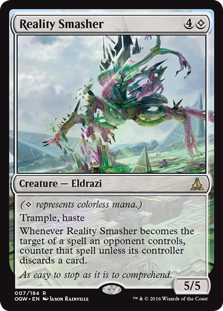 Rock is historically one of the strongest archetypes in Modern. Until recently, Jund has policed the format with an iron fist; today, the more consistent, more proactive Death's Shadow Jund has arisen to take its place.
Rock is historically one of the strongest archetypes in Modern. Until recently, Jund has policed the format with an iron fist; today, the more consistent, more proactive Death's Shadow Jund has arisen to take its place.
Stompy's a relative newcomer to Modern that rarely saw competitive success prior to Eldrazi Winter. Modernites have since wizened up to the bad-assness of Chalice of the Void, and together with other highly capable lock pieces like Relic of Progenitus and Blood Moon, the archetype has made a name for itself in the format. For those wondering, Eldrazi Tron also qualifies, but it straddles the line between stompy and ramp---some recent builds even relegate Chalice to the sideboard, and pack just two copies. I went with my own Colorless Eldrazi deck as an example because it's a purer stompy deck.
Tempo, or "Oops, I Won Lol"
Midrange is a relatively simple form of aggro-control to explain. Not only is Modern's history littered with examples of midrange decks, the term itself doesn't refer to anything else. Before we explore the tempo side of aggro-control in the same way, we need to address the dimension that makes the word so inaccessible: tempo actually has two discrete meanings.
The Meaning of Tempo
One such meaning is the commit-then-disrupt aggro-control archetype described above. The other describes an in-game resources that translates to time, and that's what this mini-section examines.
Many players peg Vapor Snag and Spell Pierce as "tempo cards," thereby associating them with tempo decks. In doing so, they conflate "tempo" with "temporary advantage," which is a common American affectation. Vapor Snag indeed generates a temporary board advantage, and Spell Pierce is only live temporarily. But even these two concepts of "temporary" are disjunct, demonstrating that "temporary advantage" is not what "tempo" actually means.
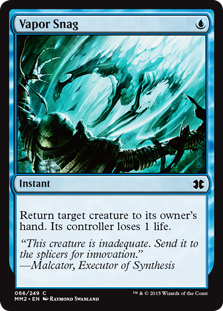 In fact, the word tempo comes from the Italian for "time" (as seen in sheet music). It's an in-game mechanic as fundamental as card advantage, but less tangible, and therefore tougher to grasp. To understand tempo, it helps to think of mana as time (you know, like Dad always used to say---"time is mana!"). It takes time to produce mana; players are only allowed one land drop per turn, and lands can only tap for mana once each turn.
In fact, the word tempo comes from the Italian for "time" (as seen in sheet music). It's an in-game mechanic as fundamental as card advantage, but less tangible, and therefore tougher to grasp. To understand tempo, it helps to think of mana as time (you know, like Dad always used to say---"time is mana!"). It takes time to produce mana; players are only allowed one land drop per turn, and lands can only tap for mana once each turn.
Snag and Pierce often affect the board or the game state in a way that steals mana (and by extension, time), from opponents. Examples include bouncing a three-drop, or countering a CMC2 removal spell. If anything, their ability to "trade up" on mana in this way is what makes them tempo cards, and not their apparent transience.
This whole notion of tempo cards is ambiguous, though. When you Pierce a Thoughtseize, the counterspell hasn't netted you a mana advantage. So is it still a tempo card? I think it's more useful to think of tempo as an in-game mechanic, as we do with card advantage. Spell Pierce can generate tempo, just as Kolaghan's Command can generate card advantage. But it won't always, and where it does or doesn't depends greatly on the situation, the deck it's played in, and the reasons it's in that deck at all. Pierce is never played as a tempo card in combo decks, for example, where its role is usually to protect key cards.
Now that we've established the meaning of tempo as an in-game mechanic, we can see why it's so bewildering to also have a strategic archetype with the same name. If control decks were instead called "card advantage decks," those would also inspire dubiety---after all, don't midrange decks also care about card advantage? Realistically, every deck cares about card advantage to a degree, and every deck cares about tempo, too; I've even written that Modern in particular is the most tempo-centric constructed format, meaning its decks tend to care more about tempo than they do in other formats.
Unfortunately, the two unconnected meanings of tempo are so entrenched in Magic theory that it would be nigh impossible to replace one with a different word, even if doing so promises an unprecedented level of clarity. Silver lining: with that depressing reality acknowledged, we can finally dissect tempo decks the same way we did with midrange decks earlier in the article.
Tempo: The Archetype
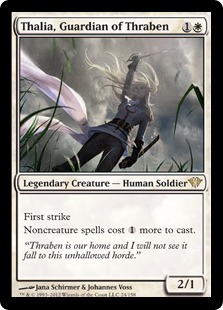 Tempo decks spend their early turns playing threats, and subsequent turns disrupting opponents while their threats close out the game unmolested. Since cheap threats come down in the early-game, when opponents are less likely to have mana available for interacting, soft permission and taxing effects prove ideal forms of disruption with which to protect those threats. These types of cards are also the most likely to steal tempo from opponents, who often feel like they're on the edge of resolving some meaningful spell all game, but suffer defeat what always seems like one turn too early. Midrange decks have mana set aside in the early game exactly for interacting, which makes tempo strategies easy prey for them.
Tempo decks spend their early turns playing threats, and subsequent turns disrupting opponents while their threats close out the game unmolested. Since cheap threats come down in the early-game, when opponents are less likely to have mana available for interacting, soft permission and taxing effects prove ideal forms of disruption with which to protect those threats. These types of cards are also the most likely to steal tempo from opponents, who often feel like they're on the edge of resolving some meaningful spell all game, but suffer defeat what always seems like one turn too early. Midrange decks have mana set aside in the early game exactly for interacting, which makes tempo strategies easy prey for them.
As with midrange, the two subdivisions of tempo are defined by the type of disruption they employ; in this case, creature-based or spell-based.
- Fish: Plays many interchangeable/synergistic threats that work together to accelerate the clock or disrupt opponents, and a small number of noncreature spells.
Modern examples: Merfolk, Death & Taxes, Humans, Spirits - Thresh: Plays a few highly efficient, individually powerful threats and disrupts opponents with noncreature spells. Often trades card advantage for speed. Modern contains very few viable thresh decks. For the sake of example, the most celebrated thresh deck in Magic is Legacy’s Canadian Threshold.
Modern examples: Monkey Grow, Grixis Delver
Despite the name, fish decks don't solely include Merfolk; Death & Taxes, Hatebears, and Spirits are all go-wide aggro-control decks that gently disrupt with like-minded weenies as they increase their own board presence. Most fish decks rely on tribal synergies to keep up with Modern's goodstuff decks, while others assemble squads of weenies that disrupt in similar or complimentary ways. Merfolk, a strategy as old as the game itself, is unequivicolly the most iconic example of a tribal fish deck in Magic; in my opinion, an exemplar non-tribal fish deck is Vintage's Noble Fish.
Thresh decks are protect-the-queen strategies stocked with permission, removal, and cantrips. The name refers specifically to Threshold, a format-hopping tournament staple that included the first stand-alone "queens" in Nimble Mongoose and Werebear (today, All Grown Up! as Delver of Secrets and Tarmogoyf).
Just as not all fish deck creatures boast a Merfolk creature type, thresh decks don't necessarily have to use the graveyard. But they often do, as the undercosted threats Wizards prints tend to come with graveyard-reliant conditions. As an example to the contrary, Death's Shadow strikes me as an example threat with potential in thresh strategies (although I honestly don't see such a deck coming together in Modern anymore without Gitaxian Probe).
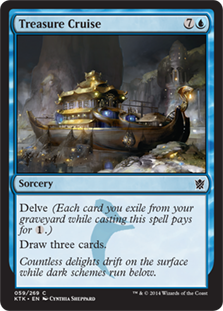 Veteran readers will notice that "thresh" is a new name I've given to what I used to call grow decks. Like "tempo," "grow" is a loaded word with a convoluted history and multiple meanings*---in other words, the type of term I'd like to avoid if able. I think "thresh" more accurately reflects an important aspect of these decks: that they'll happily throw away cards in exchange for a tempo advantage, and closely budget their resources (especially mana) throughout the duration of most games.
Veteran readers will notice that "thresh" is a new name I've given to what I used to call grow decks. Like "tempo," "grow" is a loaded word with a convoluted history and multiple meanings*---in other words, the type of term I'd like to avoid if able. I think "thresh" more accurately reflects an important aspect of these decks: that they'll happily throw away cards in exchange for a tempo advantage, and closely budget their resources (especially mana) throughout the duration of most games.
*Conversely, many of Magic's most famous grow decks, including the fabled Miracle Grow and the combo-control slanted Vintage powerhouse Gro-A-Tog, possess built-in ways to recoup card advantage at little cost à la Treasure Cruise (frequently, via Gush), which Thresh decks lack. In hindsight, the only true grow deck Modern has seen was the Cruise-featuring URx Delver.
Death's Shadow: Tempo Deck, or China Fake?
According to my presented definitions, Jund, Abzan, Grixis, and Esper Shadow alike are all firmly rock midrange decks. That said, I recognize the ambiguity, which I think comes from a few places:
- "Tempo" being a term that refers at once to an in-game mechanic and to a division of aggro-control strategies is highly disorienting
- Grixis and Esper Shadow play cards often associated (however correctly) with thresh decks, including Serum Visions, Thought Scour, Stubborn Denial, and Tasigur, the Golden Fang
- Death's Shadow decks enjoy high "reversibility," allowing them to take on tempo roles with ease in matchups that require it of them
The Hallmark of Flexible Aggro-Control Decks
That last point introduces a new Magic term I've concocted. Reversibility refers to an aggro-control deck's ability to assume the role of its archetypical opposite when necessary.
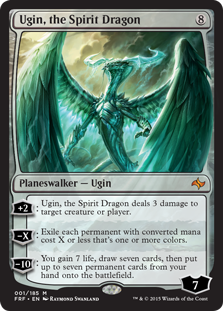 Tempo decks want to defeat opponents before they can execute their gameplans, and midrange decks want to bring the game to a state in which an opponent's game plan isn't impactful enough. It's no wonder, then, that BGx has always struggled against Tron; all the Thoughtseizes in the world won't bring the game to a point at which Tron cares about Olivia Voldaren, or at which Jund and Abzan can laugh off Ugin, the Spirit Dragon. BGx's only realistic option in this matchup is to assume a tempo role, playing threats as quickly as possible and then disrupting with Fulminator Mage or Crumble to Dust while praying, against all odds, to deal 20 damage in time.
Tempo decks want to defeat opponents before they can execute their gameplans, and midrange decks want to bring the game to a state in which an opponent's game plan isn't impactful enough. It's no wonder, then, that BGx has always struggled against Tron; all the Thoughtseizes in the world won't bring the game to a point at which Tron cares about Olivia Voldaren, or at which Jund and Abzan can laugh off Ugin, the Spirit Dragon. BGx's only realistic option in this matchup is to assume a tempo role, playing threats as quickly as possible and then disrupting with Fulminator Mage or Crumble to Dust while praying, against all odds, to deal 20 damage in time.
Of course, Jund and Abzan are still absolute dogs to Tron. Their "tempo plan" simply isn't effective enough to succeed in the matchup. We can say, then, that traditional BGx midrange decks have relatively low reversibility. Death's Shadow Jund, by contrast, has high reversibility: thanks to cards like Street Wraith, Temur Battle Rage, and of course Death's Shadow itself, the deck excels at shifting gears, goldfishing turn 4 kills the Kalitas decks of Christmas past could only dream of.
For a closer-to-home example, I've often included cards like Huntmaster of the Fells in the sideboards of my Temur Thresh decks to help with reversibility. While Thought Scour and Stubborn Denial shine against linear combo decks like Ad Nauseam, they do squat against faster creature decks like Infect, Affinity, and Merfolk. Such decks force Temur Thresh to transform into a midrange deck post-board to weather the assault.
Dreadnoughts Need Nought Apply
Tarmogoyf and Lightning Bolt are examples of cards that perform admirably both offensively and defensively, making them usual suspects in high-reversibility decks. The same can be said of Death's Shadow. It's no wonder Jund Shadow is so powerful---in addition to being highly proactive, highly interactive, and highly consistent, it's got high reversibility. But despite its remarkable competence, there's still one thing Death's Shadow ain't got: a membership to Tempo Decks of America.


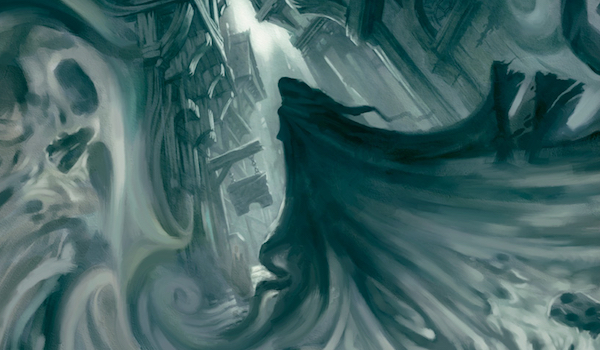


This was one of your best articles yet Jordan! I am definitely adding this article to my list of essential modern articles.
I am challenged to rethink my current classifications of modern decks; this explanation offers more clarity on the whole subject.
This quote by you I thought was extremely insightful:
“Midrange: Disrupts opponents, then establishes a clock.
Tempo: Establishes a clock, then disrupts opponents. ”
and I love how this ties in the new word you coined: “Reversibility.” There are scenarios where a tempo deck needs to disrupt, then commit (e.g. in Canadian Thresh, holding up a turn one stifle instead of playing delver or mongoose). So despite playing disruption then a clock, Canadian Thresh is still tempo because it was just practicing a little “Reversibility” in the matchup.
Overall very nice. Thank you for this!
Thank you! Glad it was helpful 🙂
Ive always hated the moniker “aggro control”. It suggests someone is playing goblin guide and sphinxs revelation together in the same deck.
When you say midrange thats fine – but I never saw jund kill someone on turn four so how the fuck does it ever “aggro” anyone out? An “aggro control” deck should be capable of either role. Casting snapcaster mage t2 and swinging does not make you an aggro deck – it makes you someone trying to beatdown with cards that are not very good at it because the situation dictates it.
Combo control and combo aggro are fine because combo is something you can just add to those archetypes if you want. Generally giving up some consistency or explosiveness for the chance to execute a combo kill.
Aggro doesnt just slide into control, nor does it work the other way. The closest you get is bolt snap bolt being an ok sequence for an aggro deck while also flexibility and answers for a control deck – but again casting resto angels and swinging wont turn your jeskai control into an aggro deck like burn affinity zoo etc. The cards simply do not overlap enough to be able to both kill on turn four and sit on a fistful of answers in the late game to “soft lock” your opponent out.
Imo the triangle doesnt work. Midrange is midrange. Its not a hybrid of aggro and control at all unless you totally warp what it means to be either type of deck.
The “aggro-control” term is one of the most misunderstood in all of Magic. This is partly because the history is a little opaque. Basically, it was initially used to refer to Fish decks—blue-heavy decks that used countermagic to protect an early threat that they rode to victory. Since then it’s been used to refer to UG Madness, Grow Atog, Canadian Threshold, Delver strategies, and so on. So “aggro-control” doesn’t mean in between aggro and control (which, you are correct, is much better called “midrange”), but to deploy aggression first, and then control an opponent’s interaction. Note that all these decks being blue is not a coincidence, but actually a core component of the moniker.
Certainly, it’s a term that might best be retired. “Tempo” evokes the same concept much more effectively. As an old dinosaur who remembers all those ancient decks, I’m certainly guilty of defaulting to the less intuitive term myself.
I mean, midrange is an aggro deck that dilutes its aggression with control cards. If you don’t know how Jund can “aggro anyone out,” take a look at the games it manages to win against Tron or other linear combo decks. Better still, take a look at the games the much higher-reversibility Jund Shadow plays against these decks.
Agreed. The Modern BG/x staple sequence of Discard into Goyf into LotV is an aggro control line of play. It disrupts opponents, commits a threat, and proceeds to continue to control the opponent’s game plan. Aggro Control (for us old fogies who like familiar terms) is, as the article above pointed out, a deck that can and does perform both roles. The decks you cited, Darcy, are decks that do their respective things just fine, but the examples you gave fail to illustrate the concept. If my UR/x control deck plays a turn 2 bolt into a turn 3 snap bolt, sure I’m taking an aggressive line, but that doesn’t make me an aggro deck, as you’ve identified. But thats ONLY in a deck built to be a control deck. The concept doesn’t apply to a different deck with a different game plan, where this line is an entirely reasonable aggro plan (don’t dis snapcaster beatdowns man. It’s a path to victory as clear as any other). It’s pretty clear that bolt belongs in both aggro and control decks (or did before the reign of Shadow and Push) but it’s the context of those cards that defines the game plan, not the cards themselves. Aggro Control decks place flexible cards like bolt into a deck made up entirely of efficient cheap cards just like it in order to be able to perform whatever role necessary in the early turns before relying on that efficiency to dictate the pace (the tempo, if you will) of the remainder of the match. This efficiency concept perhaps speaks more clearly to legacy aggro control decks (Thresh and its brethren of Uxxx delver decks), but can and does apply to Modern.
See if you just said aggro control is a protect the queen deck generally full of reactive spells and cheap threats I think I could get behind it. You play delver and then protect it – you do have “goblin guide” backed up by permission so yes you do have real elements of both plans.
But jordan says midrange decks are “aggro control”. Decks like jund and bant eldrazi? Just because you kil tron by attacking with goyf (what else would you do with it?) doesnt turn you into the same strata as zoo. The vast majority of decks can move along a spectrum of aggression and control based on the situation – even burn might sit on a fist full of bolts and blazes and just bide its time for some reason (infect?) does that make it “aggrocontrol”? Or esper control cast turn 2 snap turn 3 secure the wastes for 2 and apply 4 dmg per turn. Calling esper draw go “aggro control” because it can cast early threats and attack males the word aggro meaningless. Aggro in modern refers more to fast non-combo decks. Killing tron in four hits of a goyf does not make you a fast modern deck.
The game is just frankly too complex and nuanced to simplify it into a few archetypes like this. Combo means something, so does aggro and so does control – but if everything has to be one of those three or a mix of two you’re going to warp the meaning of the terms way beyond convention. Perhaps more importantly, theres no reason to do so. Were getting to the point that too many decks defy convention and can really just be described as themselves.
“Just because you kil tron by attacking with goyf (what else would you do with it?) doesnt turn you into the same strata as zoo.”
I’m assuming you mean that Goyf alone doesn’t present as much damage as Zoo’s creatures would against Tron. Correct! Zoo is a pure aggro deck, so of course it will be more aggressive than a diluted aggro deck. But take a look at DSJ, a deck very capable of closing out games in four turns.
Unlike traditional Jund, which employs the same overall gameplan of disrupt, commit and plays many of the same cards as Jund Midrange (no coincidence), DSJ does get very aggressive, very fast. That doesn’t make it more of an aggro deck than Jund, or as much of an aggro deck as Zoo. It just means it has high reversibility, whereas traditional Jund has low reversibility. So DSJ can easily adopt a tempo role against Tron, while traditional Jund has difficulty doing so, and Zoo doesn’t want or need to because its aggressive disposition already crushes big mana decks. DSJ’s reversibility gives it more flexibility in different contexts (and helps make it the better deck).
“The game is just frankly too complex and nuanced to simplify it into a few archetypes like this. Combo means something, so does aggro and so does control – but if everything has to be one of those three or a mix of two you’re going to warp the meaning of the terms way beyond convention. Perhaps more importantly, theres no reason to do so.”
If that’s how you feel, then this article isn’t for you. Which, of course, is fine 🙂 Personally though, I felt it was absolutely necessary that I clearly communicate my theories because doing so will help me write future articles and provide me with linkable reference points. That’s plenty reason for me! Besides, part of the fun of Magic (again, for me) lies with trying to break its complex elements down into understandable terms. I can see how that wouldn’t appeal to some players, though.
This article was a good read, pulling together a theme you’ve touched over multiple articles. It does get annoying to see people label a deck like RUG Delver and UR Twin as the same archetype, for instance.
One question I had was about labeling Grixis Delver as a Thresh strategy. I remember reading a previous article of yours, “Some Bob With Your Bugs: Confidant in Delver”, where you labeled it “Firmly Midrange”. Have you had a change of heart?
Short answer: Yes.
Long answer: At the time, I think I was a little bitter that Grixis Delver received so much exposure while Monkey Grow withered on the sidelines. I felt strongly that MG was the better deck (and still feel that it was, although I’ve all but given up on the fool’s errand of making the deck work without Probe).
To its credit, GD had higher reversibility than MG. In fact, it was built to adopt a midrange plan in half or more of its matchups! I hadn’t coined the reversibility term yet, and so pegged the deck as midrange, since it was indeed far more of a midrange deck than MG and I needed to efficiently clarify how the decks were different in my articles.
Grixis Delver is a thresh deck with moderate reversibility, as its Plan A is still a tempo plan. Reversibility aside, though, I think it’s a bad thresh deck. GD is too reliant on its midrange Plan B to fully reap the benefits of being thresh in the first place (for example, favorable Tron and Burn matchups should come with the territory, but both of those decks pose issues for GD). It’s also a bad midrange deck compared with stuff like Grixis Shadow (or, to stay in the past, Grixis Control).
I said back then that the deck was too strategically diluted to enjoy widespread Modern success, and I stand by that claim today, although my terminology and understanding of the deck’s archetypical subtleties have changed.
Thanks for the comment, and for allowing me this opportunity for introspection!